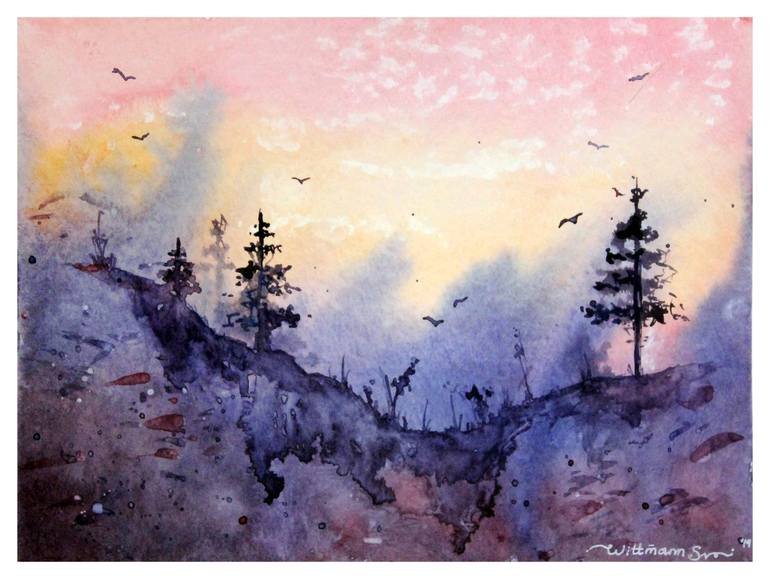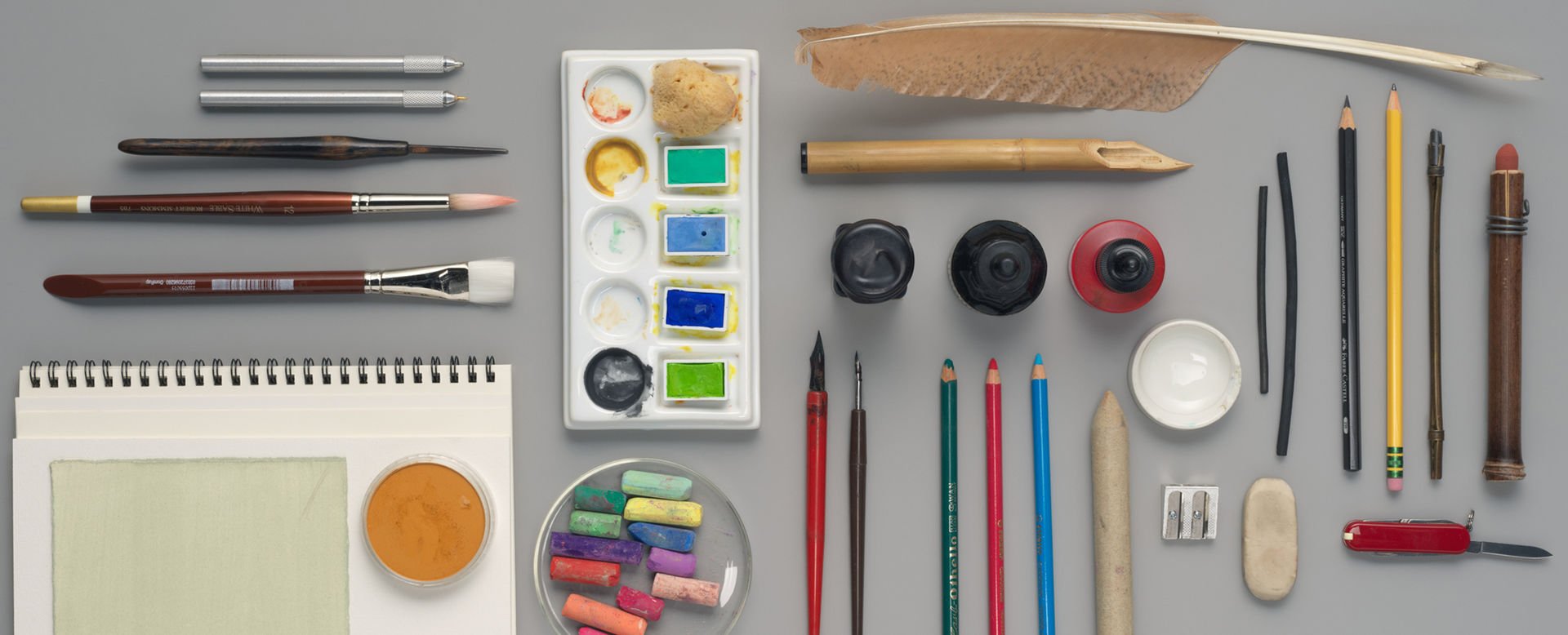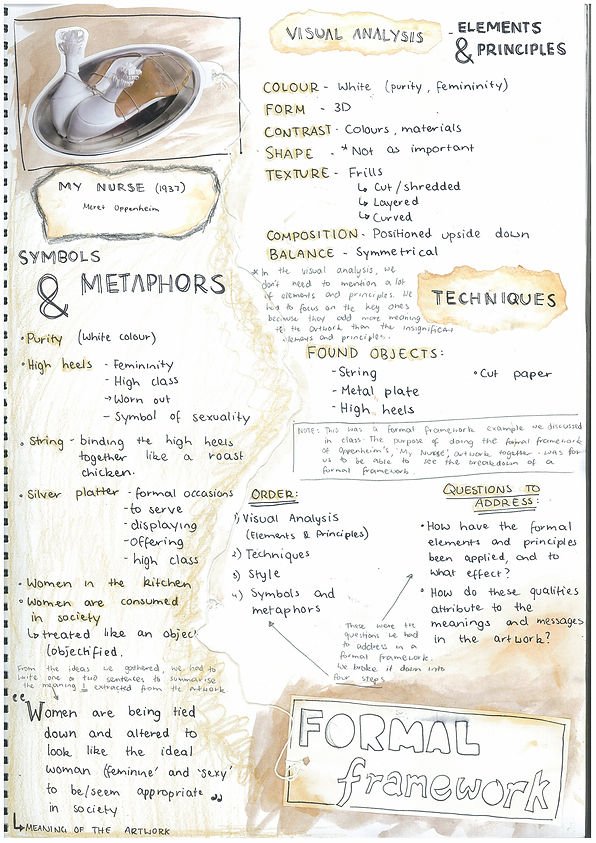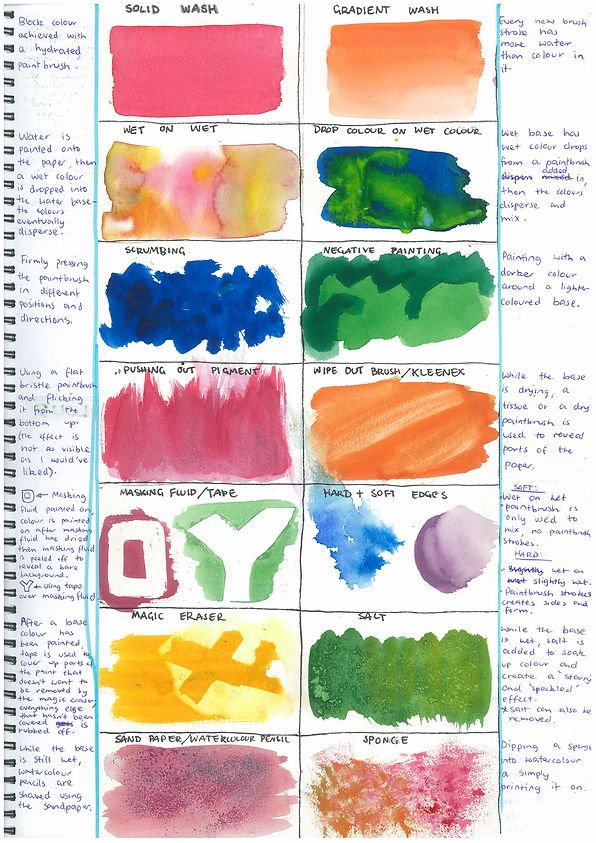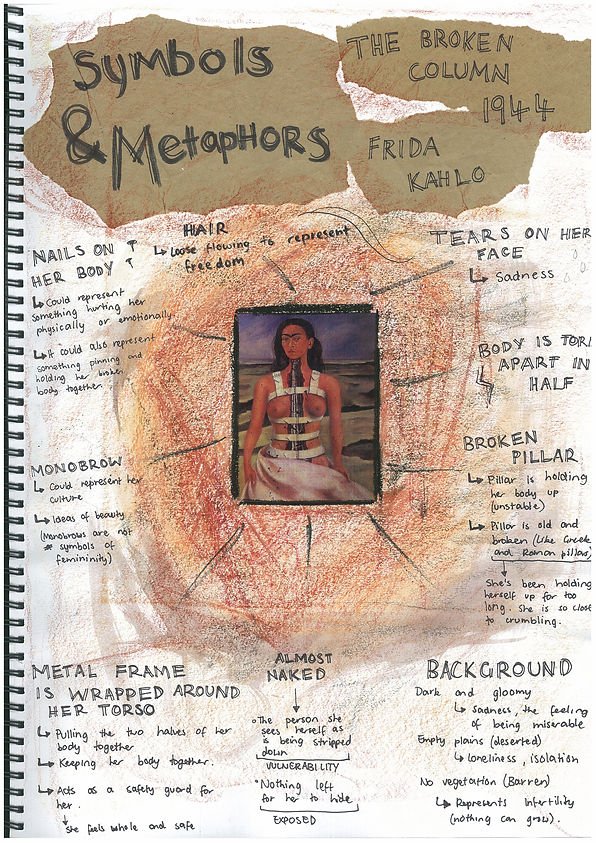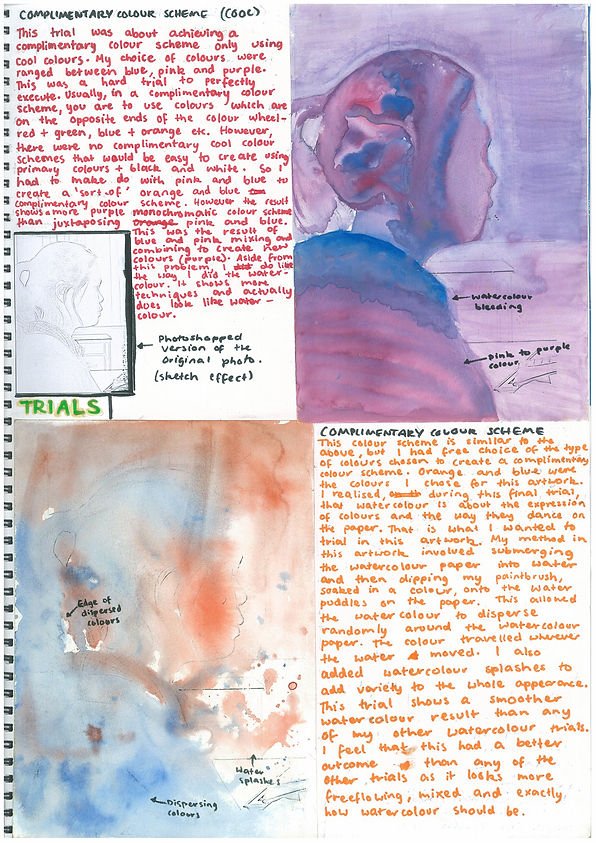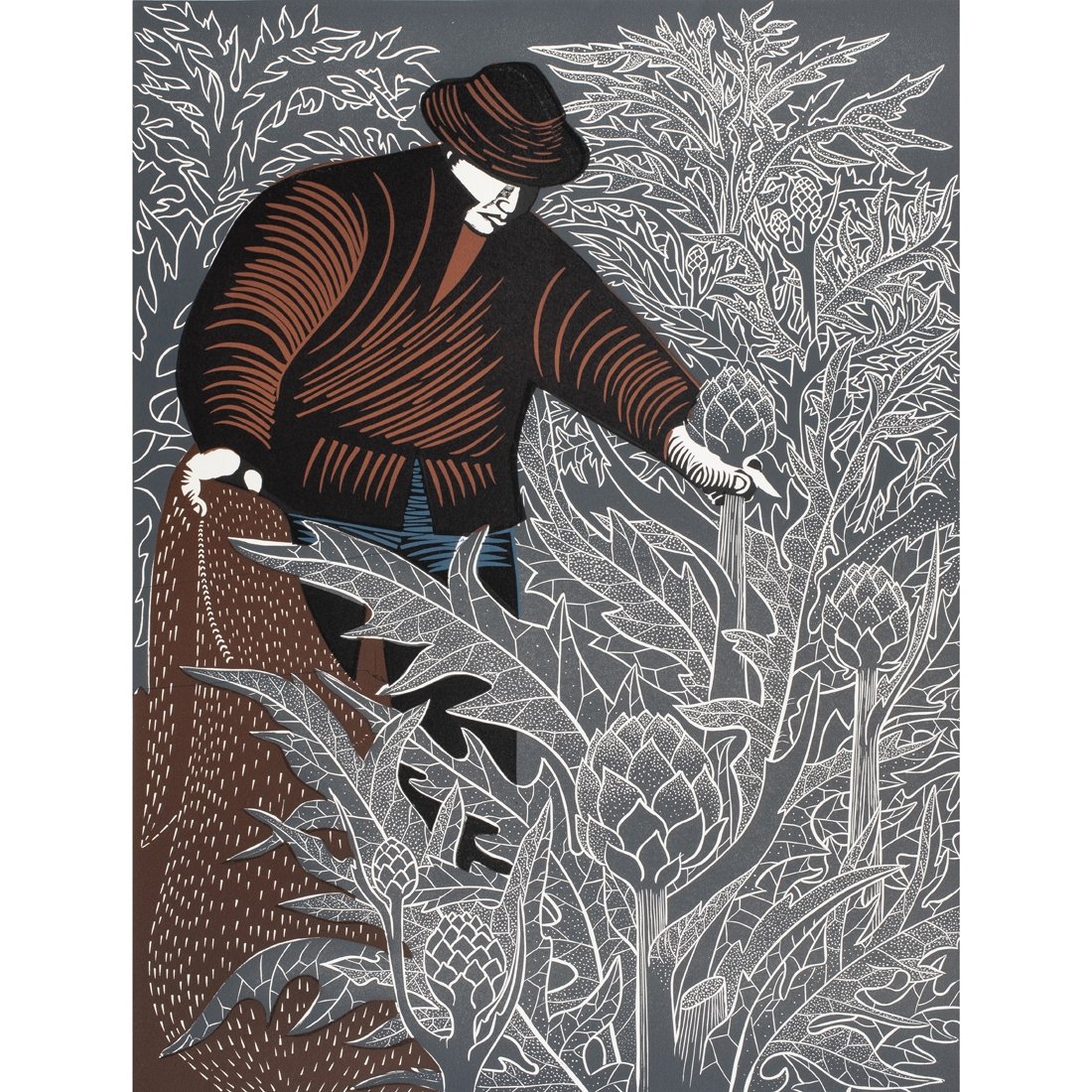
A:CP U1 AOS/Outcome 2
(Packard, 1955)
THE CREATIVE PRACTICE
Area of Study Overview:
In this area of study, you will be introduced to the Creative Practice through Experiential learning activities guided by the teacher.
You will be required to explore at least three art forms.
You will also respond to a range of artworks, ideas and the practices of artists through experimentation and exploration
You will build skills using materials, techniques and processes, and explore areas of personal interest to develop and make visual responses.
You will further investigate the practices of selected artists as inspiration for your personal visual responses.
From your personal investigation of artists and their practices, you will develop a range of visual responses through a series of tasks in three different art forms.
You will also develop your visual language by experimenting, exploring ideas, and using materials, techniques and processes relevant to your chosen three selected art forms.
Task Specifications:
Students produce a range of personal visual responses to a selection of set tasks, showing the exploration of ideas, materials and techniques in at least three art forms. Finished artworks are not an expectation of this outcome but can be considered in the student’s use of the Creative Practice.
AOS Timeline:
2 x 70-75 minute sessions per week
Duration: 4-6 weeks
Key Knowledge:
methods used to experiment with and explore materials, techniques and processes using the Creative Practice
ways to develop personal visual responses by investigating the practices of artists
the use of visual language to communicate ideas of personal interest
inherent properties of materials and their use in a range of art forms
the use of materials, techniques and art forms to make personal visual responses
ways the relationships between the artist, the artwork and the viewer or audience communicate meaning in artworks
the use of the Structural Lens and the Personal Lens to interpret meaning in visual responses
You are required to:
experiment with and explore materials, techniques and processes using the Creative Practice
investigate the practices of artists to develop personal visual responses
use visual language to communicate ideas of personal interest
explore and experiment with materials, techniques and processes in a range of art forms to make personal visual responses
explore how the relationships between the artist, the artwork, and the viewer or audience communicate meaning in artworks
apply the Structural Lens and the Personal Lens to interpret meaning in visual responses
Part 1
Part 2
Part 4
Part 5
Art Form Selection
From the wide range of art forms, select a few that are of interest to you and investigate these through researching the work of inspirational artists that practice/have practiced in this art form.
Explore:
What materials, techniques and processes have been used?
How is the interpretation of the artwork shaped by the materials and the techniques or processes used by the artist?
How do the art elements and art principles contribute to the meanings and messages of the artwork for different audiences in different contexts?
Aim to explore at least 5 art forms and have evidenced your artist research in your visual diary (folio).
(VCAA, 2024)
Practical:
Brainstorm some potential ideas for your trials through analysing your favourite art forms.
Explore and experiment with materials and processes across a range of forms to determine your favourite practices.
From the Art Forms explored, select 3 that you will continue your exploration with through this outcome. (Big decisions!)
For each art form, select 1 artist that has worked with that form and facilitate a deeper investigation into the artist and their background.
Explore:
the art period/movement they belonged to and characteristics of the period/movement
what or who they were inspired or influenced by
events or historical and cultural contexts that influenced their work.
Artists’ personal views, expressions of opinion, philosophies
Art ideas of personal importance
Part 3
(HITS - 2. Structuring Lessons, 6. Multiple Exposures, 7. Questioning, 9. Metacognitive Strategies, 1. Setting Goals)
Following your artist research, select 3 artworks from each of your artists and discuss the techniques, mediums and processes they used when creating their artwork, focusing on the structural and personal lenses.
Explore:
How has the artist applied the art elements and principles? hat effect has the use of art elements and principles had on the artwork?
What is the distinctive style of the artwork and how does it contribute to the meaning of the artwork? How does the artwork relate to other artworks in a similar style or from the same philosophical, ideological, social, historical or cultural context?
How does the context of where the artwork is presented communicate the beliefs of the artist, audience, culture, time or place in which was made and viewed?
What relationship does the artwork have to the artist’s life and experiences? What visual evidence in the artwork supports this reading?
Has the artist used a specific practice in creating the artwork that may reflect their personal ideas, beliefs, values and experiences?
How does the life experience and background of the audience affect the interpretation of the artwork?
Explore how/why each artist has chosen this art form to best convey meanings and messages
· what’s involved and considered? - Art movement, brush strokes, colour, subject matter, etc.
Practical:
Begin some intentional trials relating to the mediums, materials and techniques that you have observed in your selected artists’ work
Consider the art elements and principles used, and how you could utilise these in their approach to inspire your explorations.
Whats the big idea?
Now you have explored and interpreted some artists and artworks of inspiration within your chosen art forms, how will you use this exploration to inform your own art-making? Use the outlines of the structural and personal lenses to decide on what themes you would like to explore.
Explain and describe what aspects of their work you will trial and adapt in your own work.
What meaning and messages will you try and convey through your artmaking?
Is there a distinctive style or movement that you will draw influence from?
What elements and principles will you aim to investigate through your work?
Why and how do these works inspire you?
Clearly explain how the artist you chose will be relevant to your artmaking and creative direction.
Create an Artist Statement that conceptualises your ideas and outlines your intentions moving through more refined artistic trials.
Inspired and informed from your inquiry into artists and art forms, you will now undertake a series of defined experimentations, exploring a volume of materials, techniques, and processes. You will communicate ideas of personal interest and create personal visual responses to the subject matter and your choice of art forms to convey meaning. You will respond to, annotate, and justify each trial and your creative decisions in your folio through the structural and personal lenses.
You are required to have evidenced a series of trials in each of your 3 chosen art forms.
Lets include:
what you have done and why you did it
how you did it, such as the media and techniques used
why you chose a particular medium or technique
how an artwork or design fits in with your project
what aspects you like
how you could improve the work
what you think you will do next
Experimental activities
The task
use the Creative Practice to research, develop, and make visual responses informed by your exploration of personal interests and ideas. Resources
Printmaking Techniques and Processes
(Celestian, 2013)
Painting Techniques and Processes
(Tate, 2011)
(VCAA, 2023)
(HITS - 1. Setting Goals)
(BBC, 2024)
If you are unsure of your creative direction, how to find artists of interest, or how to start experimenting with forms through different materials and processes, here are some suggested activities that could kickstart your explorations and inspire some interesting pathways.
Abstract Expressionism and its Processes
Investigate the work of abstract expressionist painters and their processes. Select artists of inspiration that have practiced within the abstract expressionist movement and learn about this art type through the work of the artists.
Experimentation kickstart:
Using water, mops, sponges and rollers, experiment with making gestural actions on concrete. Observe the visual effects, and the physical experience of the mark-making. In the studio, work with paints to replicate the action and gesture of this process. Experiment with different mark making techniques and explore abstraction, extending to different mediums and even art forms to explore a range of outcomes
Painting Processes - Watercolour
Investigate the work of Hilma af Klint and and explore the potential and limitations of working with watercolour.
Use Hilma af Klint’s ‘Tree of Knowledge, No. 1’ as inspiration. Hilma af Klint uses abstract compositions to express her ideas about spirituality. She has developed a special visual language with trademark symbols and colour that are “untethered from recognisable references to the physical world” (Guggenheim, 2018).
What beliefs are reflected or symbolised in af Klint’s art-making?
What is the specific style and technique of Hilma af Klint’s watercolour that conveys meaning and message?
Investigate and explore: Brush strokes, Colour Saturation, Blending, Washes, Various paper types, dilution
Ceramic Processes - Claywork
Investigate the potential and limitations of working with clay through the exploration of Grayson Perry’s Aspects of Myself as inspiration.
What is the specific style and technique of Grayson Perry’s vase?
Which of the explorations of materials, techniques or processes are most interesting? Why?
Grayson Perry incorporates drawn images about his life into clay forms. These images are about identity and his place in society.
Are there themes or concepts about your life or identity that you could conveyed and investigated through art-making?
Expand your exploration to other Ceramic/Clay artists and explore the form specific processes of: Rolling, Coiling, Pinching, Pressing, Sculpting, Joining, Incising, Decorating, Glazing
Drawing Techniques and Processes
Photography: Aperture
(The Art of Education, n.d., as cited in Caudullo and Kelly, 2020)
(Adorama, 2024)
(VCAA, 2023)
(HITS - 6. Multiple exposures, 7. Questioning)
(Russo Scherr, 2024)
(Boarding All Rows, 2023)
(Del Pesco, n.d.)
(Hare, 2015)
(Eckersley’s Art and Craft, 2023)
(Art to Art, 2024)
(MET Museum, 2024)
(Mont Marte, 2022)
(Faber Castell, 2022)
Visual diary/Folio Examples
(HITS - 4. Worked examples, 6. Multiple exposures)
(Blake, n.d.)
(Blake, n.d.)
Charcoal Types
(TATE, 2024)
Create like an Artist: TATE
Multi-resource website with suggested artists, skills, and techniques in the art forms of Painting, Print and Collage, Textiles and Sculpture, and Drawing and Art-making.
(Caudullo and Kelly, 2020)
Example Rubric
(VCAA, 2023)
(VCAA, 2023)
(Caudullo and Kelly, 2020)
Core Resources
Elements and Principles Supportive Adjectives
(Art Education Victoria, 2018)
Elements and Principles of Art
Textiles Techniques and Processes
(Russo Scherr, 2024)
Artistic Trial Annotation Support
(Caudullo and Kelly, 2020)
How do we analyse art? Formal Elements
(Caudullo and Kelly, 2020)
Brainstorming Templates
(Canva, 2024)
Brainstorming Strategies for Art
(Maryland Institute College of Art, n.d.)
Art Theme Suggestions
(Caudullo and Kelly, 2020)
Annotating Your Work - Support
(BBC, 2024)
Overview Page
Supportive questions to kickstart your exploration
Whats expected in your Visual Diary/Folio?
View the overview and requirements on the Creative Practice page
All - (VCAA, 2024)
(Caudullo and Kelly, 2020)
Textiles, Photography, and Painting - Form exploration
Using the art forms of textiles, photography and painting, experiment with art materials, techniques and processes to explore the principles of each form. Discover some interesting artists that work in these forms and Investigate specific characteristics of the materials, techniques and processes. For example:
Do the materials, techniques or process have a limit?
How far can the materials, techniques and processes be pushed?
How does one get the best result from the materials, technique or process?
How have your selected artists used the art form? Can this be replicated by the student?
Printmaking Processes - Lino
Investigate and explore the potential and limitations of working with lino through the observation of Badger Bates’s contemporary linocut Mission Mob, Bend Mob, Wilcannia 1950s as inspiration.
What is the specific style and technique of Badger Bates’s print?
Evaluate the body of experimental work. Is the personal visual language becoming evident?
Which of the explorations of materials, techniques or processes are most interesting? Why?
Expand your exploration to other Printmaking artists and explore the technical processes of the art form.
Investigate: Carving techniques, Various Plates, Inking techniques, Printing methods Various papers.
‘Found Objects’ Structural Observation
Using found objects, experiment with art materials, techniques and processes to explore construction and the principle of Form. Investigate specific characteristics of the materials, techniques and processes.
Try a range of different personal approaches in response to artworks. This could include sketches, models, samples and / or trials.
Charcoal Exploration Activity
Make a cardboard frame through which to view compositions and create a series of charcoal sketches of the views. Consider what can be observed about these, as a group. Are there consistencies or connections? What observations are made about the nature of the materials?
How far can the materials, techniques, or processes be taken?
(Ehow Arts and Crafts, 2014)
(Creative Live, 2016)
(VCAA, 2024)
(VCAA, 2024)
(VCAA, 2024)
Ideas for Artistic Inspiration
(HITS - 6. Multiple exposures, 3. Explicit teaching)
(Teresa Down Under, 2014)
(The Art of Education, n.d., as cited in Caudullo and Kelly, 2020)
Art to Art: Artmaking Resource
Multi-resource website with supporting information on the techniques of Painting, Sculpting, and Drawing. Also includes information on the application and use of art materials.
(Art to Art, 2024)
(Ehullquist, 2014)
(Bulpett, 2017)
(Sykora, 2015)
(Mixed Media Girl, 2018)
(Seaton, 2018)
(Broad and High, 2014)
(Wirsu, 2015)
(Blake, n.d.)
Student Concept Direction examples
(Blake, n.d.)
References:
Art Education Victoria. (2018). Elements and Principles Supportive Adjectives. Art and Design Education VCE. https://drive.google.com/drive/folders/1RMWvjWQFY45K1_cq8d1D8X4Qd0Sy1qwa?ths=true
The Art Teacher. (2019). Art Themes to Explore In GCSE and IGCSE. https://theartyteacher.com/art-themes-to-explore-in-gcse-igcse/
Art to Art. (2024). 12 Acrylic Painting Techniques. https://www.arttoart.net/acrylic-resources-12-creative-methods?srsltid=AfmBOopHNVH35oGA6herSJU-O7LJfcWEHG5fusFk3jbiU7d7yaed1rAR
Art to Art. (2024). Art Technique Resources. https://www.arttoart.net/resources
Adorama. (2024). 15 Photography Composition Techniques to Improve Your Photos. https://www.adorama.com/alc/basic-photography-composition-techniques/
BBC. (2024). Annotating your work – AQA. https://www.bbc.co.uk/bitesize/guides/zgtngdm/revision/2
Blake. (2024). VCE Folio examples. Ms Blake Art + VCD. https://msblakeartvcd.wixsite.com/msblake/vce-art
Blake. (2024). VCE Folio examples 2. Ms Blake Art + VCD. https://msblakeartvcd.wixsite.com/msblake/visual-diary-cr
Caudullo, E. & Kelly, M. (2020). Leah VCE Art Unit 1 Folio. Slide Player. https://slideplayer.com/slide/8228077/#google_vignette
Caudullo, E. & Kelly, M. (2020). Artist Statement Template. Art Design Education VCE. Google Docs. https://docs.google.com/document/d/1tO-EBWOfhVI0aDmF6AXjR_LztgOYnreCEgT7wG_LO-8/edit
Caudullo, E. & Kelly, M. (2020). Artist Inspiration Template. Art Design Education VCE. Google Docs. https://docs.google.com/document/d/1eNLhVxKIfAWHPVVXRltNxGtAyuR13eHpbnplEw8E71o/edit
Caudullo, E. & Kelly, M. (2020). Assessment Rubric Template. Art Design Education VCE. Google Docs. https://docs.google.com/document/d/1-hfiW9Y3yyuH9j2lD7vHDhYS6c7FNgM4/edit
Caudullo, E. & Kelly, M. (2020). Artistic Trials Template. Art Design Education VCE. Google Docs. https://drive.google.com/file/d/1Z9A_W0wBCS3lOrmSfmuw9ocAxRPWS55z/view
Caudullo, E. & Kelly, M. (2020). Formal Elements Template. Art Design Education VCE. Google Docs. https://drive.google.com/file/d/1AAUnkqlicPnmZPDToWGtyxKPF4o9-63A/view
Caudullo, E. & Kelly, M. (2020). Artistic Themes Template. Art Design Education VCE. Google Docs. https://docs.google.com/document/d/1CgSBpPRaWQHsGmpYO5zR_Wa8CKkgl0-nCNht1ne9GIA/edit
Caudullo, E. & Kelly, M. (2020). Types of Charcoal. Art Design Education VCE. https://theartofeducation.edu/packs/bringing-digital-photography-art-room/?open_download=1
Caudullo, E. & Kelly, M. (2020). What is Aperture?. Art Design Education VCE. https://theartofeducation.edu/packs/teach-drawing-using-charcoal/?open_download=1
Del Pesco, B. (2024). How to Make a Monotype Print without a Press. Belinda Del Pesco. https://www.belindadelpesco.com/learn/printmaking-tips/how-to-make-a-monotype/
Eckersley’s Art And Crafts. (2023). Oil Painting Techniques: Mastering Oil Painting Guide. https://www.eckersleys.com.au/inspiration/oil-painting-techniques/?srsltid=AfmBOor-RotZHJfoMbE4nkGR-XSzS0JssrA9hEB0w345lzuAfrkVW_Np
Faber Castell. (2024). Graphite Pencil Tips and Techniques. https://www.fabercastell.com/blogs/creativity-for-life/graphite-pencil-tips-and-techniques?srsltid=AfmBOorYwFlbgyaKEN2asDTmT44g6vd5hG-GpIVtD5bPhqE__3QIwMEc
Fowler, R. (2024). How to Lino Print for Beginners. Boarding All Rows. https://www.boardingallrows.com/how-to-lino-print-for-beginners
Guggenheim. (2018). Tree of Knowledge, No. 1 (1913) by Hilma af Klint. https://www.guggenheim.org/audio/track/tree-of-knowledge-no-1-1913-by-hilma-af-klint
Hare, T. (2015). 7 Deceptively Simple Watercolor Techniques That Will Amaze Your Students. The Art of Education University. https://theartofeducation.edu/2015/02/7-deceptively-simple-watercolor-techniques-that-will-amaze-your-students/
Monte Marte. (2024). Charcoal Tips and Techniques. https://www.montmarte.com/blogs/tips-techniques/11-charcoal-techniques
Russo Scherr, J. (2024). Tetra Pak Making. Blue Lava Art. https://bluelavaart.com/art-education/tetra-pak-printmaking
Saatchi Art. Purple view. Original watercolour painting Painting. https://www.saatchiart.com/en-au/art/Painting-Purple-view-Original-watercolour-painting/1115147/4759585/view
TATE. (2024). Create Like an Artist. https://www.tate.org.uk/art/create-artist
The Metropolitan Museum of Art (MET). (2024). How Is a Drawing Made?. https://www.metmuseum.org/about-the-met/collection-areas/drawings-and-prints/materials-and-techniques/drawing
Teresa Down Under. (2014). 41 fabric manipulation tutorials. https://teresadownunder.com/2014/07/26/41-fabric-manipulation-tutorials/
Victorian Curriculum and Assessment Authority (VCAA). (2023). Art Creative Practice Study Design. [Report]. Victorian State Government. https://www.vcaa.vic.edu.au/curriculum/vce/vce-study-designs/ArtCreativePractice/Pages/index.aspx
Victorian Curriculum and Assessment Authority (VCAA). (2024). Planning Overview. Victorian State Government. https://www.vcaa.vic.edu.au/curriculum/vce/vce-study-designs/ArtCreativePractice/Pages/Planning.aspx
YouTube. (2024). Logo. https://www.youtube.com/howyoutubeworks/policies/community-guidelines/
Video:
Broad and High, (2014). Fiber Artists Create With An Overlooked Medium. [video]. YouTube. https://www.youtube.com/watch?v=qROM6SKCwss&t=144s
Bulpett, E. (2017). Lino Printing | Tutorial. [video]. YouTube. https://www.youtube.com/watch?v=h-lK2twnrBo&t=130s
Creative Live. (2016). How to Draw With Your Non Dominant Hand: Weekly Project With Brooks Chambers. [video]. YouTube. https://www.youtube.com/watch?v=yIm-AE--pqU
Celestian, L. (2013). Acrylic Paint Monoprinting. [video]. YouTube. https://www.youtube.com/watch?v=gSlIP9MQ1hk&t=291s
Ehullquist. (2014). Easy Color Block Printing. [video]. YouTube. https://www.youtube.com/watch?v=AKEWt8K4erA
eHow Arts and Crafts. (2014). Easy, One-Day Art Projects for Middle School : Art Education. [video]. YouTube. https://www.youtube.com/watch?v=RyvN6WfNco8&t=48s
Mixed Media Girl. (2018). Acrylic Pour Through a Colander. [video]. YouTube. https://www.youtube.com/watch?v=pISRjchfML0&t=350s
Seaton, B. (2018). Entopic Graphomania: Quick Intro. [video]. YouTube. https://www.youtube.com/watch?v=FhSumJRyyvg&t=151s
Sykora, C. (2015). High School Expressive Painting Project. [video]. YouTube. https://www.youtube.com/watch?v=fjsqJMjr8hw&t=232s
Tate. (2011). Artist Callum Innes – 'I'm Curious About Colour' | TateShots. [video]. YouTube. https://www.youtube.com/watch?v=Y2aunPHTe_I&t=274s
Wirsu, D. (2015). Textile Leaf Bookmarks with Deborah Wirsu. [video]. YouTube. https://www.youtube.com/watch?v=br9hpZo-4Pk&t=261s




